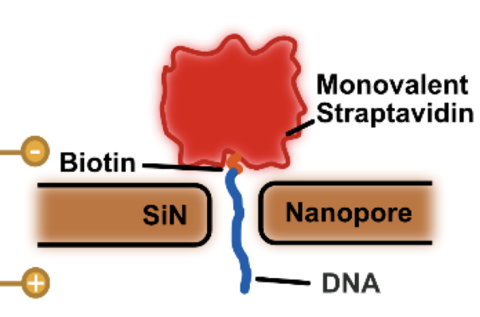Dynamics of a Molecular Plug Docked onto a Solid-State Nanopore

Docking of a protein− DNA complex onto a nanopore can provide ample observation time, and has enabled collection of analytic applications of biological nanopores, including DNA sequencing. However, the application of the same principle to solid-state nanopores is tempered by poor understanding of the docking process. Here, we elucidate the behavior of individual protein− DNA complexes docked onto a solid-state nanopore by monitoring the nanopore ionic current. Repeat docking of monovalent streptavidin− DNA complexes is found to produce ionic current blockades that fluctuate between discrete levels. We elucidate the roles of the protein plug and the DNA tether in the docking process, finding the docking configurations to determine the multitude of the current blockade levels, whereas the frequency of the current level switching is determined by the interactions between the molecules and the solid-state membrane. Finally, we prove the feasibility of using the nanopore docking principle for single-molecule sensing using solid-state nanopores by detecting conformational changes of a tethered DNA molecule from a random coil to an i-motif state.